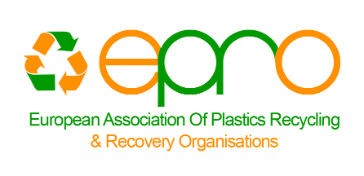EU easily surpasses minimum goal set for recovery of plastic packaging waste
New report takes a look at the numbers from 2014

Nations in the European Union (EU 28+2) recycled 6.3m tonnes (39.5%) of its 15.9m tonnes total plastic packaging waste in 2014, easily surpassing the EU’s minimum target set of 22.5%, says a new report; Plastics -The Facts 2015. PlasticsEurope and EPRO, with assistance from Consultic GmbH have collected the data presented in this report.
Increasing plastic packaging recycling
The recycling rate for plastic packaging rose from 34.7% in 2012 to 39.5% in 2014. This shows that the national recycling schemes in Europe, based on extended producer responsibility (EPR), manage well, EPRO says. Each country has normally, either by law or a covenant, fixed national targets for recycling and energy recovery. These regulations are based on the EU directive on Packaging and Packaging Waste (94/62/EU).
Except for Malta, all the EU 28+ 2 countries in 2014 exceeded the EU minimum targets of 22.5% recycling. 24 countries (19 in 2012) recycled more than 30%, 12 countries even surpassed 40%. In 2014, Czech Republic ranked on the top with a recycling rate of 52.1% followed by Germany, Slovenia, Sweden and Ireland.
Plastic packaging waste from households vs trade and industry
64% of the post-consumer plastic packaging waste is generated from households, the remaining 36%, comes from the trade/ industry segment. The recycling rate for trade and industry sector reached 42.8% (37.6% in 2012), while recycling for the households segment obtained 37.7% (33%). Recycling rates are thus increasing in both sectors.
The following EPRO countries include all kinds of plastic packaging in their collection schemes for households: Germany, Finland, Iceland, Italy, Norway, Portugal, Spain and Sweden, either in a separate plastics fraction or together with other lightweight packaging (yellow bin). In other countries like Austria and UK, some parts of the country collect all plastic packaging while other regions concentrate on just rigid plastic packaging. Germany, Finland, Iceland, Norway and Sweden have in addition a deposit system for most of the beverage bottles. In Belgium, France and Switzerland, the EPR- systems focus on rigid plastics (bottles), but France is about to expand, step by step, the scope of the system to comprise all plastic packaging. How to sort, recycle and recover mixed streams of plastic packaging is a key topic for EPRO working groups. In addition, design for recycling is also a key issue for EPRO.
More energy recovery also, but less landfilling
Energy recovery hit 38.5% in 2014 (34.5% in 2012). In total 78.0% (72.5%) of all plastic packaging waste was recovered in 2014, the balance going to landfills and incineration without energy recovery; 3.5m tonnes of plastic packaging ended in landfills last year.
There are still big differences on energy recovery results within Europe. Ten countries energy recovered more than 50% of their plastic packaging waste in 2014 and obtained all a total recovery rate (recycling + energy recovery) above 90%. This means that less than 10% was landfilled in these countries. At the other end of the ranking list, we find a couple of countries that still does not energy recover any plastic waste. Ten countries landfilled more than 40% of their plastic packaging waste, among them Spain with 41%.
Plastic waste in general
The recycling result for packaging of 39.5% is better than for other plastic applications. The overall recycling rate for plastics reached 29.7% in 2014.
While 40% of all plastic products put on the market are packaging, packaging contributes by 62% to all plastic waste generated and as much as 81% to all plastics recycled. 7.7m tonnes of plastic waste were recycled in 2014, of which 6.3m tonnes packaging. Packaging thus lift the average recycling rates for all plastics in Europe, EPRO says.
Plastic waste from agriculture
Several EPRO members are also active within the agriculture sector, collecting and recovering agriculture film and other non- packaging plastics in addition to rigid plastic packaging waste from farmers.
In 2014, the agriculture sector generated 1.4m tonnes of post-consumer non-packaging plastic waste. This equals 5% of all plastic waste generated within EU28+2. In 2014, 28.0% (26.4%) of this was recycled, while 31.1% (28.4 %) was energy recovered. The rest, 40.9% (45.2%) went to landfill. EPRO wants, in cooperation with other involved organizations, to contribute to more diversion of agriculture plastic waste from the European landfills.
In 2011, EPRO established a working group focusing on collection and recovery of plastic waste from the agricultural sector. This expert group exchanges knowledge and best practice among EPRO members and is networking with other organisations. In November 2015, RIGK together with EPRO organized the first International Recycling Forum for Agricultural plastics in Wiesbaden with 120 participants from 22 countries. We can obtain synergies between agri- packaging and agri non- packaging plastic recycling- thus we join forces, EPRO says.
EPRO is preparing for a new circular economy package
In October, EPRO and CICLOPLAST organized in Madrid a Talks-Debate about recycling plastics where experts discussed about the keys to a further increase of plastic recycling in Europe. EPRO expects that extended producer responsibility, EPR, will remain a key instrument for a circular economy. We expect also higher recycling targets. The results for 2014 underline that EPR and EPRO members make a difference.
Company info
Konigin Astridlaan 59 bus 5
Wemmel, BRUSSEL,
BE, B-1780
Website:
epro-plasticsrecycling.org



